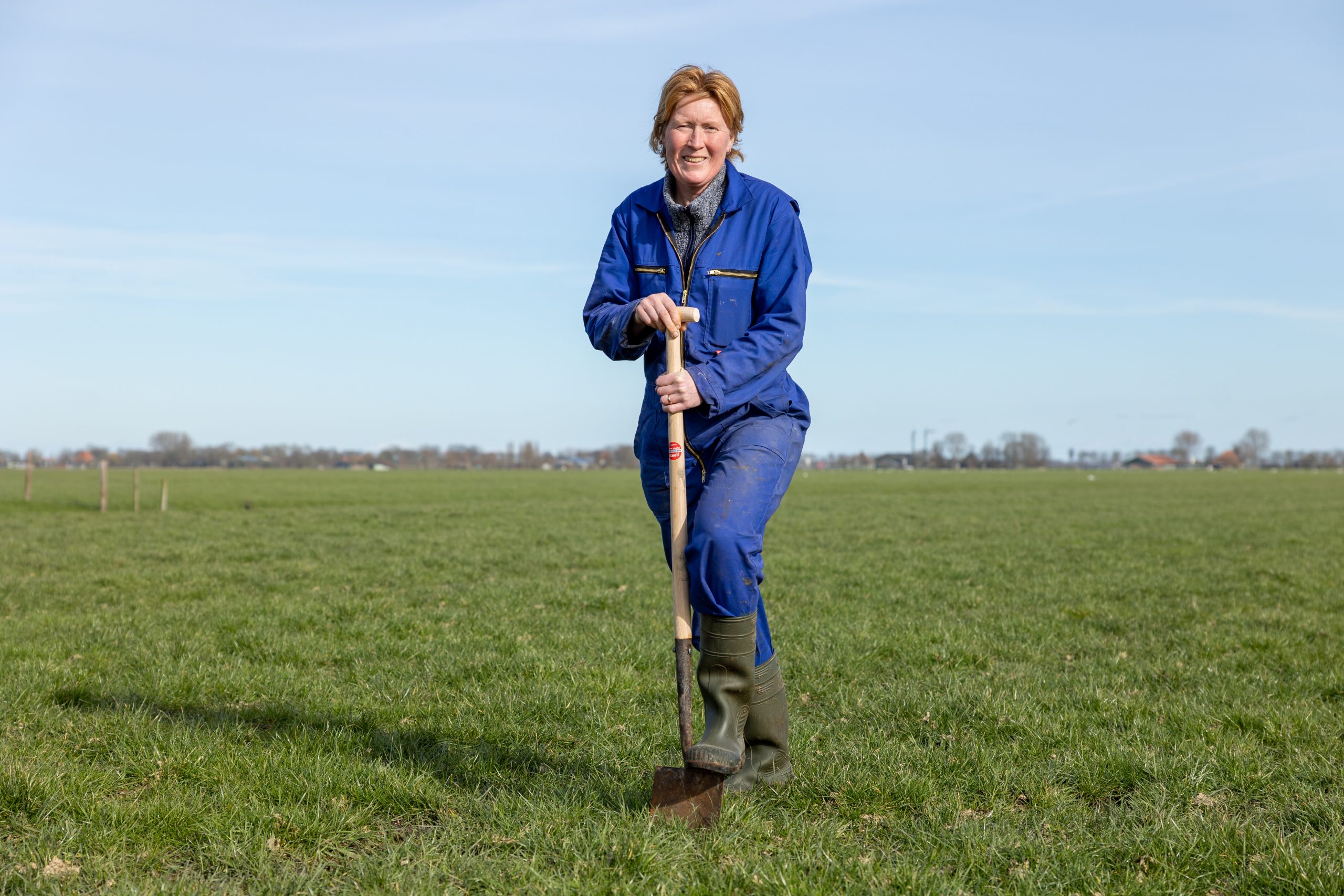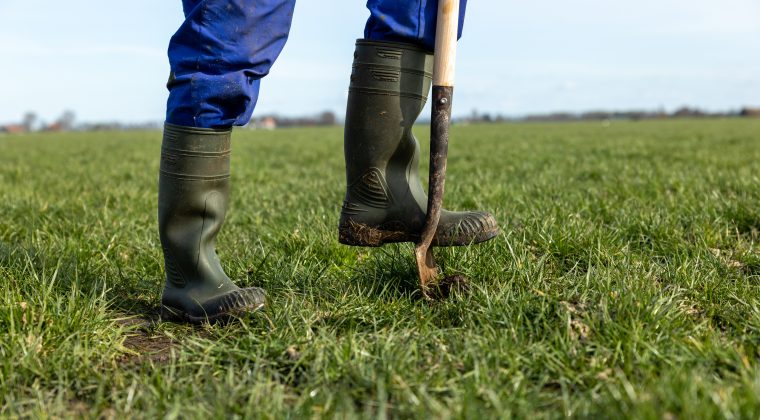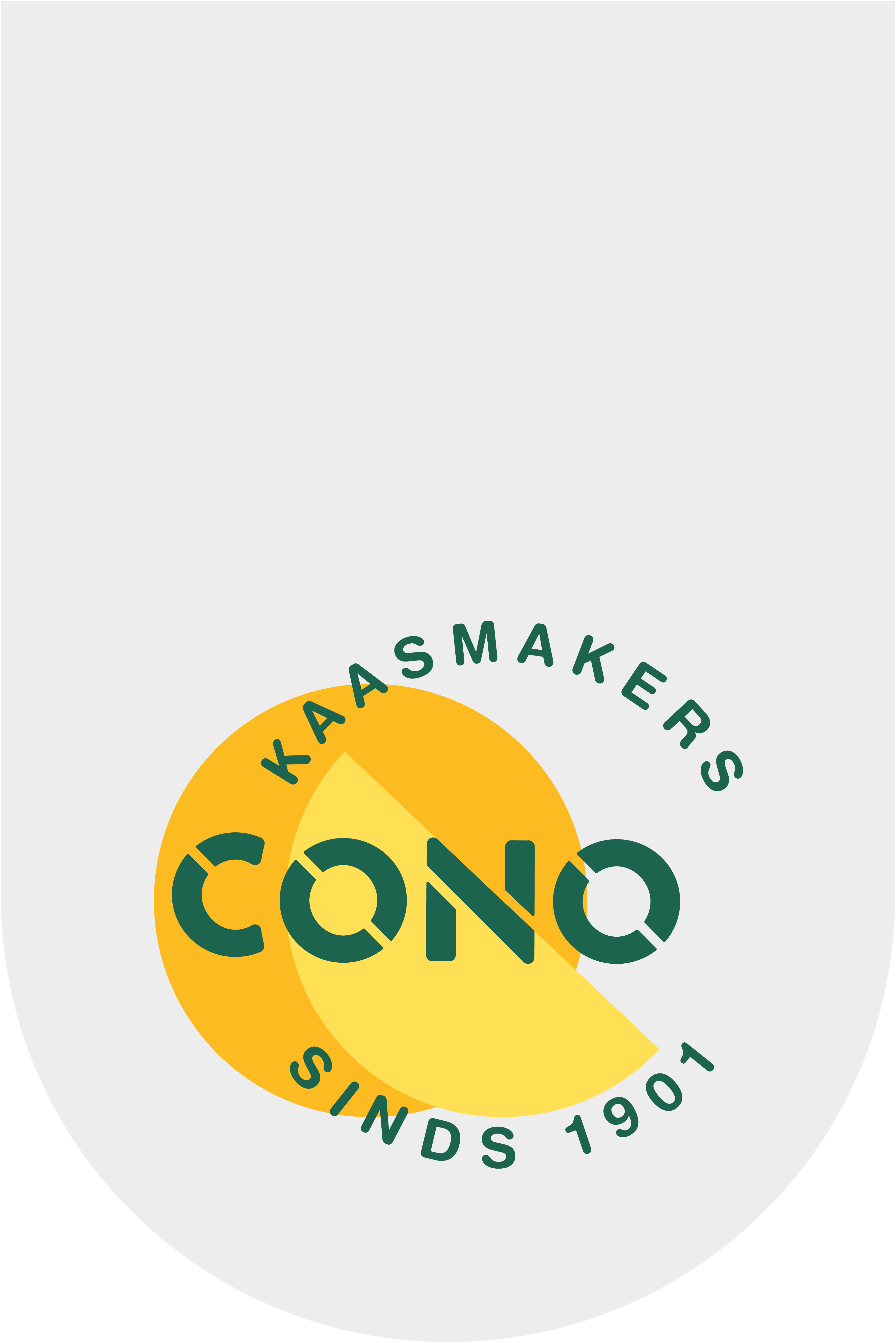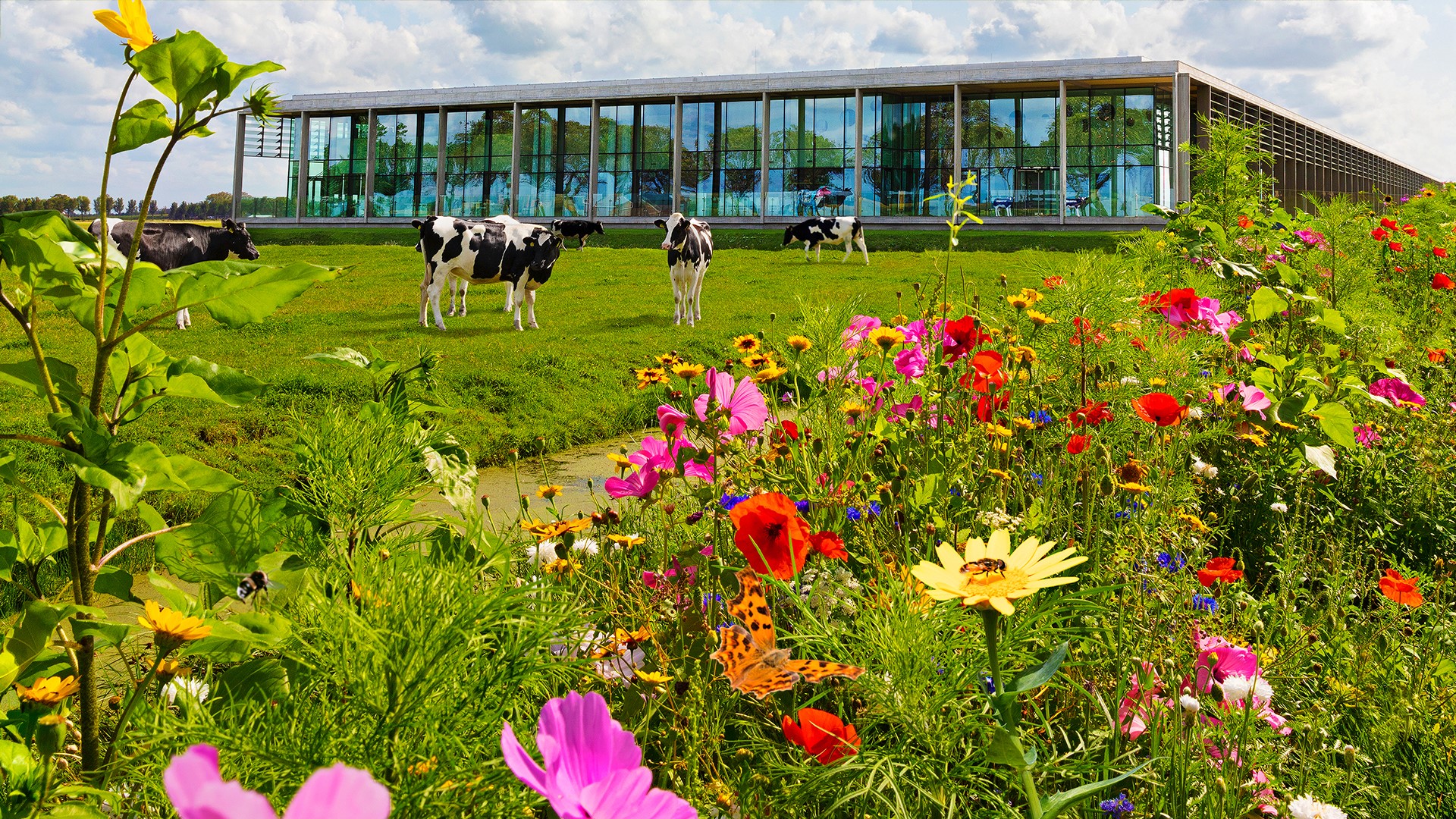Sandra Oudshoorn from Westbeemster really wanted to work on healthy soil. Because that's where the cows graze and the grass, corn and other feed grows. The better the quality of the soil, the healthier the cows, and ultimately the better the quality of the milk. So let them let nature do its job more.
Fertilizer is the "easy" way of growing fast and a lot. But in doing so, you completely deplete the soil, so to speak. Moreover, producing fertilizer releases a lot ofCO2. "I do get it," says dairy farmer Sandra Oudshoorn. "After the war it was said: 'Never again hunger'. That's why the agricultural sector started producing a lot. But modern times call for other choices. And logical that we then take the initiative ourselves."

Soil in balance
These plans fit ideally within Caring Dairy of dairy cooperative CONO. This sustainability program for dairy farming focuses on making the entire chain from cow to cheese more sustainable. Together with about twelve other dairy farmers from the area, Sandra forms the 'Beemster regenerative agriculture' study club within Caring Dairy. Every two years there is a new theme, the first time in 2020. "The idea was to start with the soil, because that is the beginning of the whole milk cycle. The goal is to put the soil itself to work. To do that, the soil has to be in balance. Think just the right minerals in the right amounts for optimal fertility. But also an active soil life, such as worms and other insects that make large plant debris smaller and provide a nice airy structure with their digging." All participating livestock farmers made a piece of their land available for a variety of experiments. But first there was a baseline measurement so that the soil quality was clear at the start.
Herb-rich grassland
One farmer was going to fertilize the land with solid manure (just cow poop), another with slurry (poop and pee), and yet another with straw manure (poop, pee AND some straw on which the cows lie in the barn). Salt also plays an important role. So one plot was sprinkled with sea salt, while at another the cows were given some extra salt. "Of course we keep track of everything accurately," says Sandra. For the baseline measurement, we hired an independent soil biologist to explain the data from the analysis, and another expert gave us all individual advice. Now it's mostly patience, because it won't be until a few years from now that the results will be properly visible. We are going to have soil samples taken every three years." Meanwhile, the group has picked up another new theme: herb-rich grassland. By growing flowers and herbs through the grass, the cows get more protein, the soil is better protected against drought, for example, and less (artificial) fertilizer is needed. Sandra: "We have already visited a farm on Marken that has been successfully sowing herb-rich grassland for many years. Now we want to try it ourselves. Because for us a healthy soil and a healthy cow are most important!"


